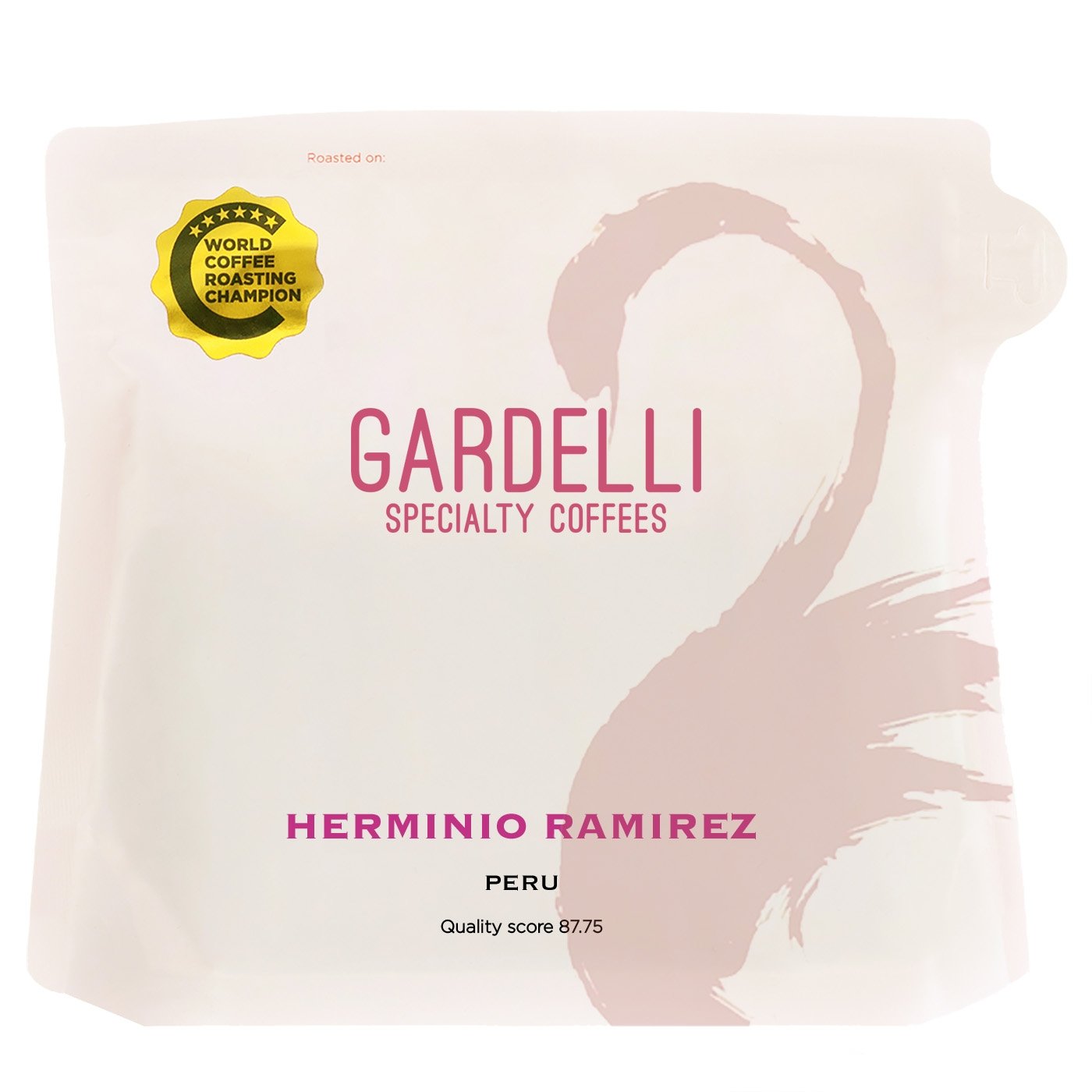





Peru
250g
QUALITY SCORE: 87.75
Cup Notes
Quince / Peach / Golden raisin / Grapefruit
Suggested for espresso and filter
when we roast
We freshly roast to order all coffees on Monday, Wednesday and Friday (excluding national holidays), and ship the same day! Cut-off time is 11:59pm (UTC+1) of the day before the roast day. *We only ship whole beans*
Herminio Romero Ramirez is a coffee producer from the village of las Pirias in Chirinos. He has two hectares of land planted with coffee, 1.5 of which is Caturra. The farm is close to the village centre and is at 1800 masl. Herminio picks and processes all of his own coffee and dries it on tarpaulin inside a small wooden shed he built to dry coffee. Herminio is one of a number of producers in Las Pirias that are young and dynamic and trying to make a future in the coffee industry for them and their family. He has an eye for detail and this year has put a lot of effort into picking only the ripest cherries and slowly drying his coffee so that it maintains its characteristics. After years of low prices and not seeing any reward for the effort he has put into the farm, he was very close to giving up coffee production altogether, but now he is already investing his quality premiums in his farm so he can improve quality and production.
Chirinos is a district in the province of San Ignacio and is one of the most well known areas for quality coffee in Peru. Chirinos is well connected to nearby cities, with new roads and a thriving town, which serves as a hub for coffee buying and trade. Whilst the coffee landscape in Chirinos is still dominated by middlemen and FTO certifications, there is a growing interest in specialty coffee and some of the biggest cooperatives in the area have been promoting quality for a number of years. However, for those producers that aren’t members of coops, of which there are many, there is still little access to market and little support to invest in their farms and improve quality.
There are a number of villages across Chirinos which have ideal growing conditions for coffee, with altitudes above 1700 masl, and many producers still have old pure Arabica varieties. We see huge potential for quality improvement in Chirinos, with small changes and investments producers can escape low market prices which rarely cover the cost of production and find a market for their coffee that pays well above the market with quality incentives.

Caturra coffee varietal was developed by the Alcides Carvalho Coffee Center of the IAC, Instituto Agronomico of the Sao Paulo State in Brazil.
In 1937, IAC received seed samples of genetic materials originated on the border of the states of Minas Gerais and Espírito Santo. It was from Red Caturra and yellow Caturra cultivars. These two cultivars originated by natural mutation of Bourbon Red, originally a tall coffee shrub, found in the Serra do Caparaó , which is now a mountainous National Park north east of the city of Rio de Janeiro.
These are the main agronomic characteristics of the Red and Yellow Caturra varietals:
1. It is the of small size, of reduced length of internodes, leaves and side branches, providing compact appearance to the coffee shrub.
2. This is the first naturally occurred coffee mutation found, with small size and high yield capacity
3. They have excellent quality in the cup because they have virtually 100% of the Bourbon coffee in their genetic makeup.
4. the conditions in which they were planted in Brazil to cultivate Caturra showed low hardiness and consequent lack of vigor after a few harvests, which led to the premature depletion in yield.

Washed coffees focus solely on the bean. They let you taste you what’s on the inside, not the outside. Washed coffees depend almost 100% on the bean having absorbed enough natural sugars and nutrients during its growing cycle. This means the varietal, soil, weather, ripeness, fermentation, washing, and drying are absolutely key.
Washed coffees reflect both the science of growing the perfect coffee bean and the fact that farmers are an integral part of crafting the taste of a coffee bean. When looking at washed coffees, it becomes apparent that the country of origin and environmental conditions play a vital role in adding to the flavour.
During wet processing, the pulp (i.e.the exocarp and a part of the mesocarp) is removed mechanically. The remaining mesocarp, called mucilage, sticks to the parchment and is also removed before drying. During this process, the sugars present in the mucilage are removed through natural fermentation or mechanical scrubbing. Mucilage is insoluble in water and clings to parchment too strongly to be removed by simple washing. Mucilage can be removed by fermentation followed by washing or by strong friction in machines called mucilage removers. Fermentation can be done by stacking the coffee outside or placing them under water and allowing nature to take its course. After the sugars are removed, the beans then can be taken through a secondary washing to remove any additional debris, or taken immediately to the beds for drying.
